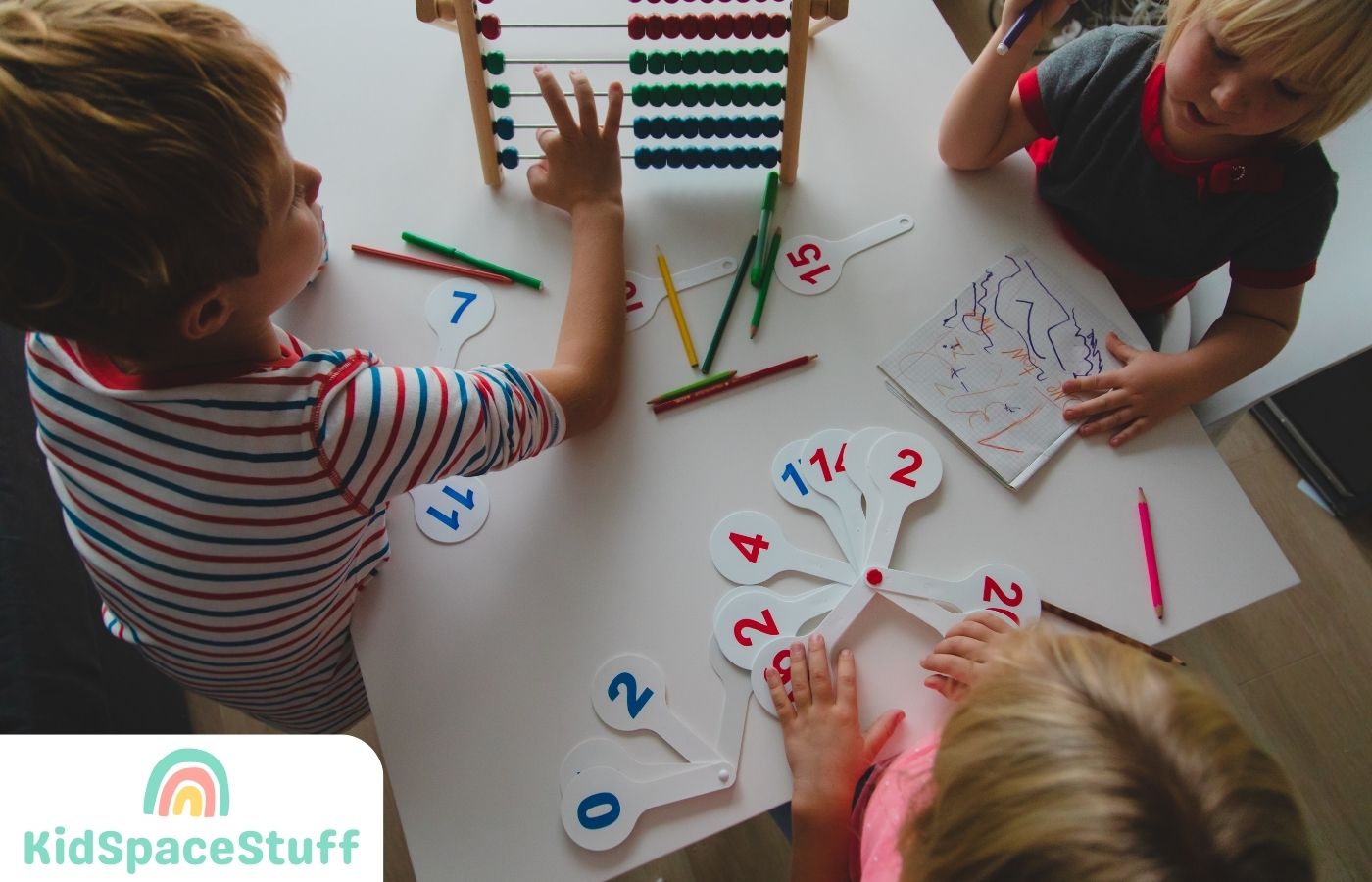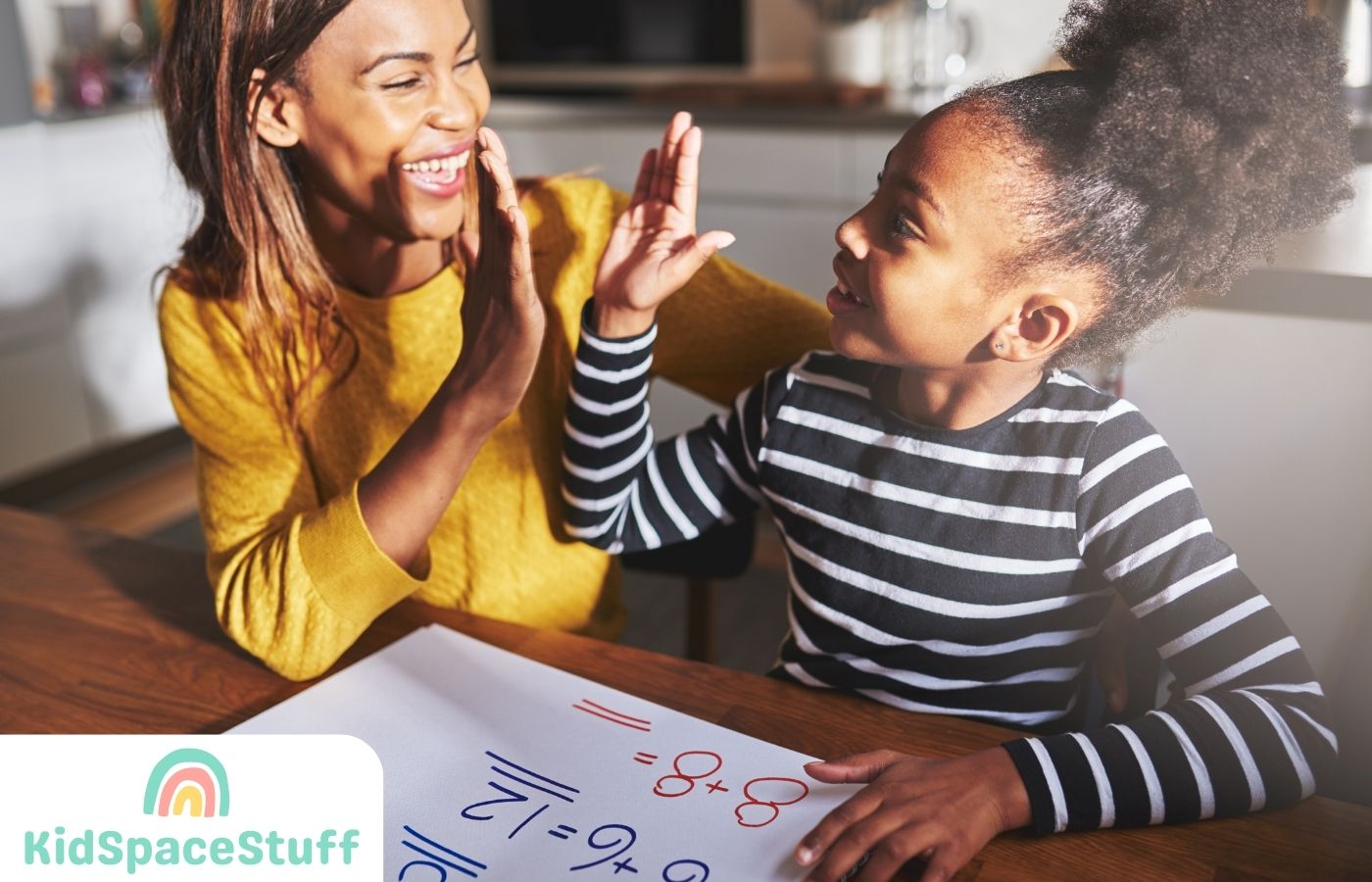As a mother of several children, one of the many developmental milestones I’ve keenly observed is their grasp of mathematical concepts.
In particular, the development of early math skills is absolutely essential, and it’s fascinating to watch as each child begins to understand concepts like addition and subtraction.
The journey has not been without its hurdles, though. Just as each of my children is unique, so too are the challenges they face in learning math. In this piece, I’ll share my experiences and insights into how children learn to add and the importance of early mathematical development, along with practical advice to overcome hurdles.
Key Takeaways:
- Early development of mathematical skills in children is important for their overall math learning journey and most kids will start learning around the age of 3 to 5.
- Teaching strategies such as hands-on methods, counting songs and activities, and skip counting can help children learn addition effectively.
- Understanding milestones and expectations for addition learning, such as number facts and fact families, order of operations, and corresponding subtraction facts, can guide parents and educators in supporting children’s math learning.
Early Days: The Emergence of Mathematical Skills
From my first-hand experience as a mother, I’ve observed that the onset of math skills plays a pivotal role in a child’s overall learning progress. In these tender years, they are introduced to numbers, learn to count, and start adding up. Ensuring they have a robust foundation at this stage is critical to future academic success.
Each of my children faced unique challenges in understanding math. However, I quickly realized that the right teaching techniques can effectively address these difficulties. Simple tools such as manipulatives, like counters or blocks, proved immensely beneficial in making abstract math tangible. This hands-on approach helped them visualize the concept of addition and fostered their engagement in the learning process.
I also employed a variety of fun-filled learning aids like songs and activities. They were instrumental in helping my children memorize numbers and associate the joy of singing or playing with the learning of addition. Techniques like skip counting and building number sense came in handy, too. By identifying patterns and counting in intervals, my kids’ understanding of math significantly improved.
Delving into Learning Milestones

One of the most rewarding parts of being a parent is observing my children reach their learning milestones. With regards to math, key milestones include understanding number facts and fact families. Recognizing these relationships aids them in solving more complex problems. It’s also crucial for them to comprehend the order of operations, place value, and the concepts of regrouping and carrying over.
Moreover, I’ve found that a good understanding of subtraction facts is just as important as addition. Once my children understood that subtraction is the inverse of addition, they were able to make connections between the two operations, enhancing their overall math abilities.
Encountering Hurdles in the Math Journey
Despite the steady progress, my children, like many others, often found math to be a bit of a challenge. The complexity of math concepts (especially multiplication and division), coupled with the need for logical thinking, can make it daunting for young learners. Abstract concepts, in particular, can be difficult to comprehend.
Transitioning from simple to more complex topics also presented a challenge, as did the realization that not all teaching methods cater to all learning styles. It was up to me as a parent to ensure that I was able to adapt to each of my child’s unique learning needs.
Finding the Right Teaching Strategies
Over the years, I’ve learned that effective teaching is key in helping children navigate these challenges. Just like sneaking vegetables into their favorite mac and cheese, using subtle but efficient teaching methods can do the trick!
Hands-On Approach to Teaching
My experience has taught me that teaching young children addition can be a fun and engaging process with the right strategies. I’ve often turned to hands-on methods, such as using blocks, cubes, or counters, that allow children to physically interact with numbers and visually understand addition.
Interactive games and puzzles have also been instrumental in making learning fun, reinforcing their math skills along the way. Practical real-life scenarios, like grocery shopping or cooking, help children see the relevance of addition in their everyday lives.
By creating a connection with the subject, their motivation to learn increases. Incorporating a multi-sensory approach by involving visual representations, auditory instructions, and tactile experiences further enhanced their understanding of addition.
Making Math Fun: Counting Songs and Activities

I’ve discovered that learning can be fun, and nothing proves this better than counting songs and activities. One of my kids’ favorites is “Five Little Ducks.” It’s repetitive, rhythmic, and does a great job teaching numbers in a fun and memorable way.
Finger-counting activities have been a godsend in helping my children understand addition. When they count with their fingers, they can visually see how numbers combine, making the concept clearer to them.
Number bonds, patterns games, and math manipulatives like blocks or counters are other helpful tools I’ve used. They allow for active learning and help my children visually understand addition problems, making it more likely that they will remember what they’ve learned.
Jumping into Skip Counting and Number Sense Strategies
Another great way I found to teach my children addition was through skip counting and number sense strategies. These techniques let kids develop a strong understanding of numerical patterns and relationships.
We would get to skip counting by different increments, which helped them understand grouping of numbers. Pattern activities, like finding the next number in a sequence or completing missing numbers, helped them recognize relationships between numbers.
Manipulatives like cubes and counters let them physically group numbers and observe patterns. Mental math became a crucial part of our routine, where they would solve addition problems without written calculations, relying on their number sense strategies.
Key Milestones and Expectations: Number Facts and More
One of the things I’ve noticed in my children’s mathematical journey is that they must understand number facts and fact families. I used different teaching techniques, like manipulatives and visual aids, for them to interact with numbers. Counting songs and activities also proved to be useful, reinforcing number facts in an enjoyable way.
Understanding order of operations and other math concepts is an important milestone. It provides a systematic way to solve problems accurately. Additionally, concepts like place value are essential, especially when adding or subtracting multiple-digit numbers. To reinforce these concepts, I engaged my kids in activities that involved manipulatives like number lines or base-ten blocks.
FAQs about When Do Kids Learn To Add
When do kids learn to add?
There is no definitive answer to the question of when kids learn addition, as every child learns at their own pace. Teachers are trained to determine when children are ready to learn addition and can provide guidance on when to introduce it. Children typically learn addition and subtraction in small steps between kindergarten and fourth grade.
What math activities can help kids learn addition?
Parents can support their children’s math learning by encouraging a positive attitude, breaking down concepts into manageable pieces, and providing practice opportunities. Math activities such as playing the Number Facts Pairs game and board games, engaging in baking activities, and using manipulative objects can make learning addition fun and engaging.
How can spatial awareness contribute to learning addition?
Spatial awareness is an important skill that can contribute to learning addition. Understanding spatial relationships, such as placing one box inside another or stacking rings, helps children develop a sense of quantity and visualize mathematical ideas. By incorporating spatial awareness activities into math lessons, children can enhance their understanding of addition concepts.
What are some suitable math activities for first and second graders to practice addition?
First and second graders can practice addition through various activities such as playing dice games, engaging in craft projects that involve counting and adding objects, and using hands-on methods. Board games and game nights can also provide opportunities for children to practice their addition skills in a fun and interactive way.
At what age do children typically learn to add double-digit numbers?
Children in third grade typically transition from hands-on methods to using paper and pencil for addition. They begin to work with two-digit numbers and develop the ability to add them without modeling the numbers. The progression from single-digit to double-digit addition usually occurs around third grade.
When do preschoolers typically begin learning addition?
Preschoolers typically begin to develop an understanding of addition through counting and combining sets of objects. They may use manipulative objects or their fingers to perform addition tasks. While they may not fully grasp the concept of addition, exposure to counting and adding objects sets the foundation for future math learning.
Final Thoughts
As we navigated the world of addition, we eventually arrived at the doorstep of subtraction. I found it important to help my children see the connection between addition and subtraction. This idea of ‘Corresponding Subtraction Facts’ allowed them to understand that each addition problem has a matching subtraction problem, and vice versa. By knowing their addition facts, solving subtraction problems became much easier.
Through this enriching journey of helping my children learn math, I’ve come to appreciate that every hurdle is a stepping stone to the next level of understanding. With the right support, resources, and a lot of love, every child can conquer the world of math. As a mom, there’s nothing more rewarding than that.
KidSpaceStuff is a site dedicated to helping parents find the best interior design, activities, and inspiration for their kids.